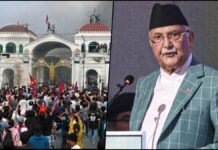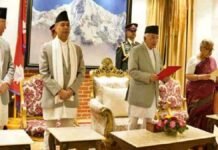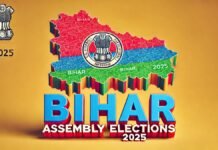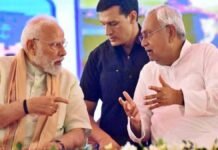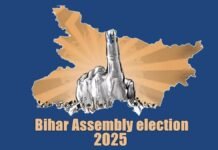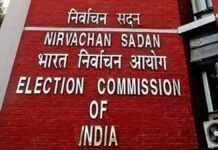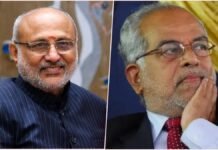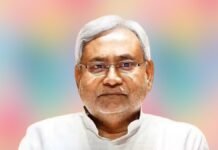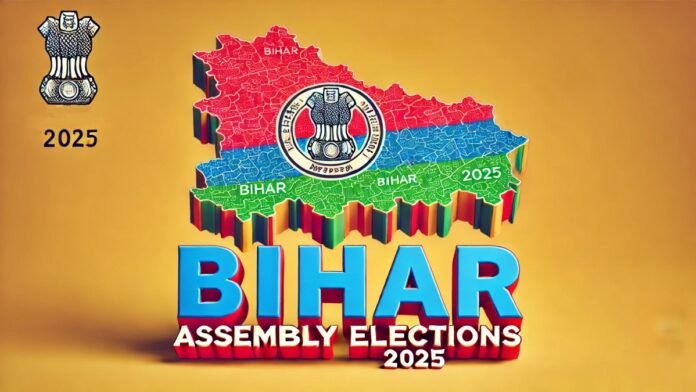
Key Points:
- Bihar Assembly elections scheduled in two phases on November 6 and 11, results on November 14
- IANS-Materialize survey reveals 57% believe PM Modi’s popularity will significantly impact election outcome
- Nitish Kumar’s 125-unit free electricity scheme expected to benefit ruling alliance by 61% respondents
- Women’s Employment Scheme’s ₹10,000 installment received positively by 52% participants
- BJP leads governance expectations at 35%, followed by JDU (18%), RJD (13%), and Congress (2%)
New Delhi: The Election Commission of India has set the stage for a high-stakes political contest in Bihar, announcing the schedule for the 243-seat Assembly elections. The voting will occur across two phases, with 121 constituencies going to polls on November 6 and the remaining 122 seats on November 11. The fate of Bihar’s political landscape will be sealed when results are declared on November 14, marking a crucial test for both the ruling National Democratic Alliance (NDA) and opposition parties.
As the election dates were announced, the IANS-Materialize survey has provided significant insights into voter sentiment across Bihar, highlighting key factors that could influence the electoral outcome.
PM Modi’s Popularity Emerges as Major Factor
Prime Minister Narendra Modi’s appeal continues to be a decisive element in Bihar politics. The survey data indicates that an overwhelming 57 percent of respondents believe Modi’s popularity will substantially impact the Assembly election results. Additionally, 8 percent acknowledged a moderate influence of the Modi factor, while 21 percent felt his popularity would not affect state-level voting patterns. This suggests that nearly two-thirds of Bihar’s electorate views the Prime Minister’s endorsement and campaign presence as electorally significant, potentially benefiting NDA candidates across constituencies.
Free Electricity Scheme Resonates with Voters
The Nitish Kumar government’s ambitious welfare initiative offering 125 units of free electricity monthly has emerged as a potential game-changer. According to the survey, 61 percent of Bihar residents believe this scheme will significantly benefit the ruling coalition in the upcoming elections. Another 9 percent anticipate moderate electoral gains from this policy, while 21 percent dismiss its impact on voting behavior. The scheme’s popularity reflects growing voter preference for direct benefit transfers and welfare-oriented governance, particularly among economically vulnerable sections.
Women’s Economic Empowerment Initiative Shows Promise
The Women’s Employment Scheme, which provides ₹10,000 as an initial installment to beneficiaries, has received positive feedback from the electorate. The survey reveals that 52 percent of respondents believe the scheme has positively impacted women’s economic well-being. An additional 10 percent expect slight positive effects on electoral outcomes, while 19 percent remain skeptical about its significance. This initiative represents the government’s focus on women voters, a traditionally decisive demographic bloc in Bihar politics.
Governance Expectations Favor BJP
When asked about governance capabilities, survey participants demonstrated clear preferences. The Bharatiya Janata Party (BJP) leads expectations with 35 percent support, positioning it as the most trusted party for effective administration. The Janata Dal (United) follows with 18 percent, while the Rashtriya Janata Dal (RJD) secured 13 percent confidence. The Congress party trails significantly at 2 percent, reflecting its diminished presence in Bihar’s political landscape.
Electoral Significance and What Lies Ahead
These survey findings suggest that the Bihar elections will be influenced by a combination of national leadership appeal and state-level welfare initiatives. The confluence of Modi’s popularity with targeted welfare schemes like free electricity and women’s economic empowerment programs could provide a substantial advantage to the NDA alliance. However, with three weeks remaining until the first phase of voting, opposition parties have time to counter these narratives and present alternative visions for Bihar’s development.
The election will test whether welfare schemes and central leadership charisma can overcome local issues, caste equations, and anti-incumbency sentiments that traditionally shape Bihar’s complex electoral dynamics.





